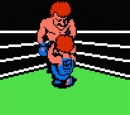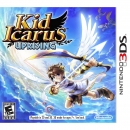Tuesday, July 03, 2012
Wii U - Confirmed Specs from SDK & GPU Info
PowerPC architecture.
Three cores (fully coherent).
3MB aggregate L2 Cache size.
core 0: 512 KB
core 1: 2048 KB
core 2: 512 KB
Write gatherer per core.
Locked (L1d) cache DMA per core.
Main Memory
Up to 3GB of main memory (CAT-DEVs only). Note: retail machine will have half devkit memory
Please note that the quantity of memory available from the Cafe SDK and Operating System may vary.
Graphics and Video
Modern unified shader architecture.
32MB high-bandwidth eDRAM, supports 720p 4x MSAA or 1080p rendering in a single pass.
HDMI and component video outputs.
Features
Unified shader architecture executes vertex, geometry, and pixel shaders
Multi-sample anti-aliasing (2, 4, or 8 samples per pixel)
Read from multi-sample surfaces in the shader
128-bit floating point HDR texture filtering
High resolution texture support (up to 8192 x 8192)
Indexed cube map arrays
8 render targets
Independent blend modes per render target
Pixel coverage sample masking
Hierarchical Z/stencil buffer
Early Z test and Fast Z Clear
Lossless Z & stencil compression
2x/4x/8x/16x high quality adaptive anisotropic filtering modes
sRGB filtering (gamma/degamma)
Tessellation unit
Stream out support
Compute shader support
GX2 is a 3D graphics API for the Nintendo Wii U system (also known as Cafe). The API is designed to be as efficient as GX(1) from the Nintendo GameCube and Wii systems. Current features are modeled after OpenGL and the AMD r7xx series of graphics processors. Wii U’s graphics processor is referred to as GPU7.
Sound and Audio
Dedicated 120MHz audio DSP.
Support for 6 channel discrete uncompressed audio (via HDMI).
2 channel audio for the Cafe DRC controller.
Monaural audio for the Cafe Remote controller.
Networking
802.11 b/g/n Wifi.
Peripherals
2 x USB 2.0 host controllers x 2 ports each.
SDCard Slot.
Built-in Storage
512MB SLC NAND for System.
8GB MLC NAND for Applications.
Host PC Bridge
Dedicated Cafe-to-host PC bridge hardware.
Allows File System emulation by host PC.
Provides interface for debugger and logging to host PC.
- Optimized post-processing effects – apply advanced lighting techniques to enhance the mood in a scene
- High quality shadow filtering – no more hard edges on a shadow, see shadows the way you would in real life
- Depth of field – use the power of the GPU to have more realistic transitions of focal points – imagine looking through a gun sight or a camera lens
- High Definition Ambient occlusion – incredibly realistic lighting and shadow combinations
The good news is that the GPU in the Wii U should be able to accomplish all the effects of the PS4 and next Xbox, with those systems most likely being able to do "more of it" and at faster speeds. However, with the similar technology and features that all next-gen systems will have it's doubtful that the Wii U will get left behind in the graphics race since the difference will not be noticeable enough to warrant actually purchasing another console based on the sole reason of the Wii U not being able to run a certain game like what happened with the original Wii. It's encouraging that we (I say we, but I mean the industry since you could argue that the Wii had the best games this gen) will finally get back to comparing who has the best games and not the best graphics in this coming generation.
Source: http://www.nintengen.com/2012/07/wii-u-confirmed-specs-from-sdk-gpu-info.html
Edit: Not sure if this info has been posted as confirmed before, but according to this, if a game is built from the ground up for Wii U there will be a noticeable leap in graphics from the last generation.
































































